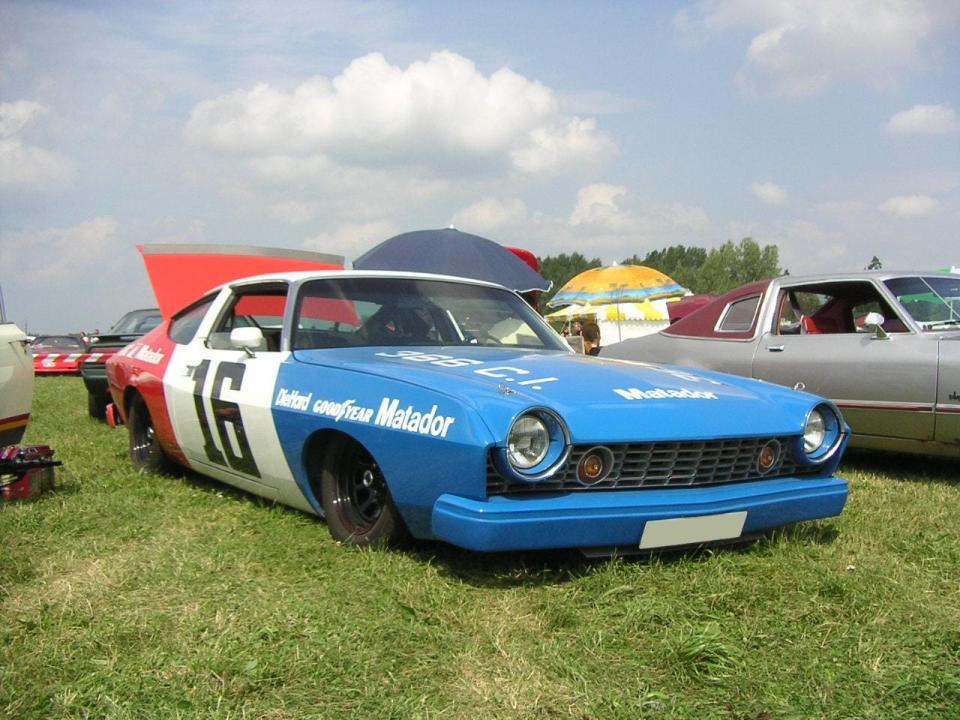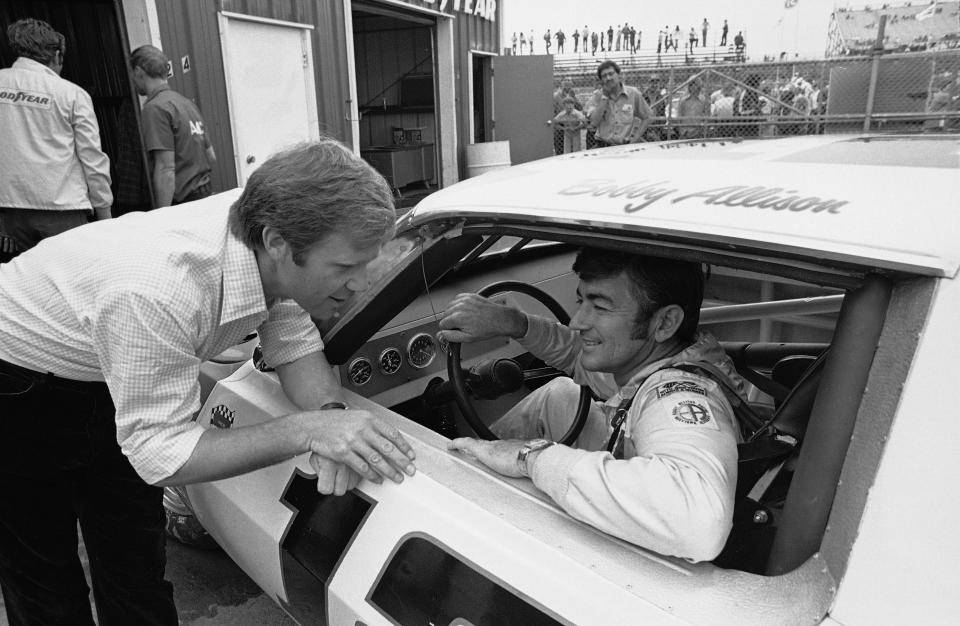The story of the iconic red, white and blue AMC Matador and how it became NASCAR favorite
Throughout NASCAR’s 75-year history, there have been brand names on the front grilles of cars that have competed in the elite Cup Series. Today’s young crowd of fans quite possibly have never heard of such makes as Hudson Hornet, Nash Ambassador and the Tucker and Kaiser, to name a few. There were many upstarts but only a few survived since the early 1900s.
One popular model raced in NASCAR's modern era during the early to mid-1970s was the red, white and blue American Motors Corporation Matador, a car dubbed an underdog that at times performed well against General Motors, Ford Motor Co., Dodge and Chrysler.
AMC’s heyday really began in 1970 through the SCCA Trans AM circuit with driver Mark Donohue and team owner Roger Penske.
The smaller pony cars, as they were referred to, were where the AMC logo shined brightest. Nine SCCA Trans Am wins in 1971 for Donohue in the Javelin prompted AMC executives to look at more ways to get their label on a bigger stage. NASCAR was the place to be.

TRUEX FUTURE: Coming off dominant win in contract year, NASCAR's Martin Truex Jr. ponders future
MEMORIES OF DAVEY: Remembering NASCAR's Davey Allison on 30th anniversary of his last race, at New Hampshire
During a press conference held in January of 1972, Penske, an ambitious rising star in motorsports, fielded the team with Donohue, a driver that would go on to win the 1972 Indianapolis 500 six months later. NASCAR veteran Dave Marcis was also hired to wheel the AMC Matador in six Cup events that year, logging two seventh place finishes at Darlington, S.C. and Rockingham, N.C. as his best outings with the team.
A group of reporters gathered in the garage area at Daytona International Speedway that January morning with a skeptical eye toward the upstart venture.
“We will run a minimum of eight races up to 12,” Penske said, according to an article written by Gene Granger of the Spartanburg Herald. “We are capable of running 25 races if we want to. Our first race is the Riverside 500 (at Riverside, California, January 23, 1972). Mark can drive in the first four races (Riverside, the Daytona 500, the Ontario 500 and Atlanta 500). Our schedule doesn’t get in full swing until April.”
Donohue added that a win in the Cup Series would take time and that success would not be immediate.
“We aren’t saying we are (initially) going to win,” Donohue stressed. “We are coming down here (to NASCAR) very humbly. We have a lot of respect for this kind of racing. It has been around for a long time.”
Indeed, there were a lot of kinks to be worked out. Donohue finished 39th, 35th, 44th and 15th in their first four starts. Victory did come on the road course at Riverside on Jan. 21, 1973. Donohue led 138 of the race’s 191 laps and credited his car’s four-wheel disc brakes, something new to NASCAR at that time, for giving him the race-winning advantage.
“It made the difference,” Donohue said in post-race interviews, according to Greg Fielden’s 40 Years of Stock Car Racing Series. “I could carry the car deeper into the corners and that’s what it takes on a road course.”
Penske built an even stronger association with AMC that same year with an amazing business decision that led to a relationship lasting through the 1975 Cup Series season.
“We actually bought Michigan International Speedway for $2 million in 1973 when it was in bankruptcy,” Penske has said in recent years. “We bought it to serve as a test track for AMC to use it 354 of 365 days a year. It served as a great test facility to make their cars perform better.”
Using MIS as a flagship of sorts, Penske built an empire of race tracks that included California Speedway, North Carolina Motor Speedway, Nazareth Speedway and others. In 1999, he sold many of them to International Speedway Corporation, the owners of Daytona International Speedway and many others. Along with his current Team Penske operation that fields multi-car teams in NASCAR and Indy Car as well as many well-known businesses, he is estimated to be worth over $1 billion.

Looking back to 1973, Donohue’s only other start in NASCAR that year came at Atlanta International Raceway where he suffered engine issues in the Matador and finished 30th. Commitments to IndyCar, Cam Am and Formula One events kept Donohue busy as he served in a management role for all teams fielded by Penske. Sadly, on Aug. 19, 1975, Donohue died of head injuries after crashing during a practice session before the Austrian Grand Prix in Graz, Austria, along the Osterreichring race course.
Bobby Allison was the most successful driver in the Matador, recording four wins in 1974 and 1975 at Riverside, Ontario, and twice at Darlington Raceway.
“The AMC Matadors were some of my favorite cars to race,” Allison said. “Part of the reason I liked them was because they were incredibly popular with the fans. I remember everywhere we went, the fans wanted to see the car beat the Chevrolets, Dodges and Fords. The car represented them in a way against the big guys. It was considered an underdog for sure.
“I won at Riverside and Ontario and those were big wins. But winning both races at Darlington in the Matador in 1975 were huge personal victories. I won five times at Darlington and it was always such a special race track for me. Winning there was always such a thrill.”
In 1976, Penske left the Matador program to field Mercurys with Allison but did not win a Cup Series race. Allison returned to his own team in 1977 and fielded Matadors but went winless again.
“As hard as I tried, I was unable to win in the Matador that year,” Allison said. “I gave it everything I had. I won the ‘Whatever Race 480’ about 15 times but something would break in the engine the last 20 laps. It was still a great car. I loved driving it.”
Sunday's NASCAR race
FireKeepers Casino 400 at Michigan International Speedway, 2:30 p.m. (USA)
This article originally appeared on The Fayetteville Observer: AMC Matador and how it became a huge hit in NASCAR in the 1970s

